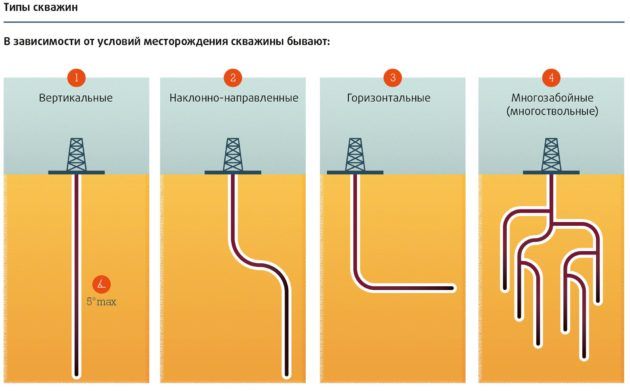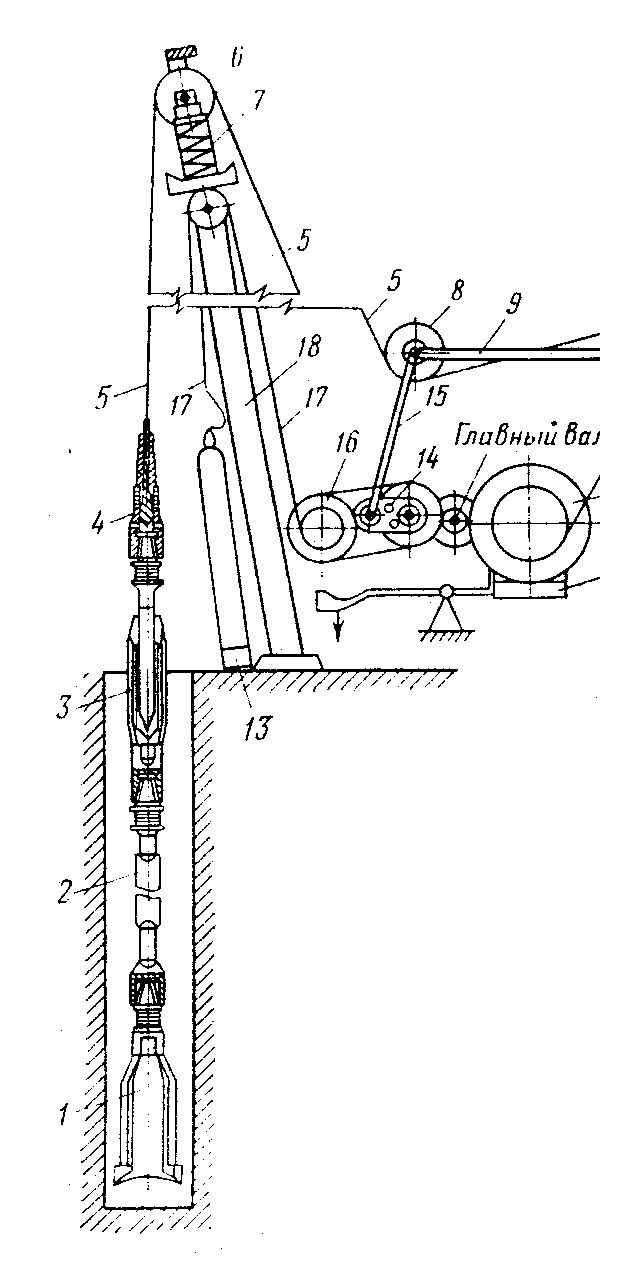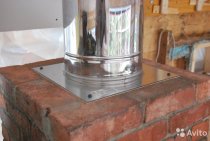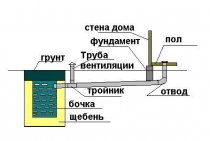Sand wells what you need to know and how to get clean water
Sand wells are an advantageous ratio of low cost and long service life of water intake. This is the best solution for giving. The debit is enough to provide a small cottage and maintain the site. Sand springs are less subject to performance changes, easy to maintain.
The well is equipped to a depth of up to 40 m. The minimum depth depends on the depth of the 2-3 sandy aquifer and ranges from 20 m. It is almost impossible to determine the depth of the layers without exploration and the availability of special maps.
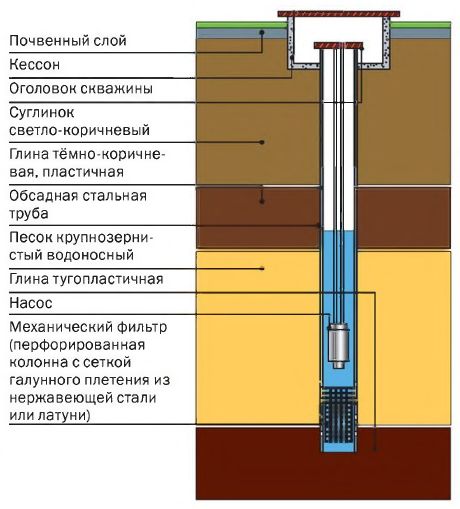
The period of use of the source and stability of performance is at least 10 - 15 years. The quality and quantity of water depends on the composition of the aquifer and water saturation. If the water lens is located in coarse sand, or gravel-sand mixture, such a well is less prone to silting and has good productivity. The average flow rates are up to 1.5 - 2 m3 per hour.
The location of the arrangement is chosen depending on the drilling technique. A flat area is needed at a distance from the house or other buildings at a distance of 5 m. To maintain the absolute verticality of the trunk, choose flat, without slopes and elevations, areas.
Advantages:
- Simplicity and speed of arrangement - the standard turnaround time is 1-2 days.
- Low cost.
- Ability to work in hard-to-reach places.
- Stable performance, ease of care, the possibility of seasonal conservation.
Depending on the landscape conditions, the composition of the soil and the depth to which they plan to drill a well, they choose the technique of work:
Auger drilling using a mobile rig or a small-sized collapsible rig.
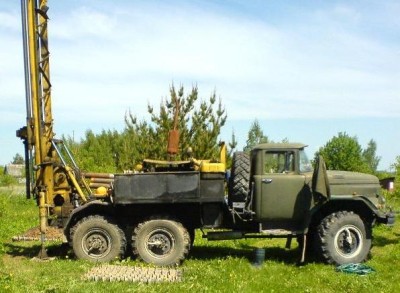
- The shock-rope method is applicable in soft soils.
- Rotary drilling with the supply of water pressure for washing the mine.
MBU is used when passing to a depth of up to 40 m. The structure is assembled in a limited area - a site of 2x3 m is enough. For the whole complex of works, 1 day is enough. The casing string is formed from thick-walled steel pipes, or special reinforced plastic pipes. At the bottom of the casing there should be a perforated section - a filter that protects the bottom from the penetration of clay and sand.
Wells are equipped with pumping stations. It is preferable to use submersible pumps, selected in accordance with the productivity of the source and the intensity of well operation.
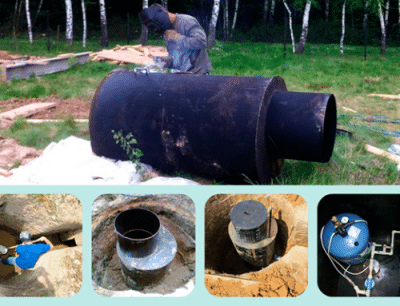
From the drilling site to the cottage, an underground water supply is laid, digging in an insulated pipe below the freezing point. Automation and a hydraulic accumulator are installed in a caisson or basement.
Taking measurements and landscaping
Before the technical process of drilling wells with water under pressure, it is necessary to carry out preparatory work. They consist of the following steps:
Calculation of the depth of the water reservoir
This is important for preparing the required length of pipes and determining the features of the drilling process. To do this, you need to get a map of the area with geodetic designations, take care in advance of the fluid used for the drilling rig in the amount of 5-21 m³.
Preparing the site for work
This drilling method implies the presence of two containers of 1 m³ each for filtering the drilling fluid and subsequent use in the drilling rig. These containers are interconnected by a special channel and protect the surrounding area from excessive pollution.
The drill itself is installed in a strictly vertical position, the intake hose for the pump is located in the first tank. From where through it the liquid enters the drill shaft.
The specified drilling rig is distinguished by its simplicity and efficiency in the use of energy resources. It is an ideal option for private use, as it does not require additional theoretical knowledge and extensive practical experience. All that is required is strict adherence to the strict sequence of the technological process.
3.2 Rotary well drilling
With rotational
drilling rock destruction occurs
as a result of the simultaneous impact
on bit load and torque.
Under the action of the load, the bit is introduced
into the rock, and under the influence of torque
moment breaks it.
There are two
types of rotary drilling
- rotary and with downhole motors.
With rotary
drilling(Figure 2.8) power from
9 engines is transmitted through the winch
8 to the rotor 16 - a special rotary
mechanism installed above the mouth
wells in the center of the tower. Rotor rotates
drill string and screwed to it
bit 1. The drill string consists of
leading pipe 15 and screwed to it with
using a special sub 6
drill pipes 5.
Hence,
in rotary drilling, bit depth
into the rock occurs when moving along
axis of the well of a rotary drill
columns, and when drilling with downhole
engine - non-rotating drilling
columns. characteristic feature
rotary drilling is flushing
When drilling with
downhole motorbit 1 screwed on
to the shaft, and the drill string to the body
2. When the engine is running
its shaft with a bit rotates, and the drilling
the column perceives the reactive moment
rotation of the motor housing, which
extinguished by a non-rotating rotor (into the rotor
install a special plug).
Mud pump 20,
driven by engine 21,
pumps drilling fluid through the manifold
(high pressure pipeline) 19 v
riser - pipe 17, vertically installed
in the right corner of the tower, then in flexible
drilling hose (sleeve) 14, swivel 10 and
drill string. Reaching the chisel
flushing fluid passes through
holes in it and along the annular
space between the well wall and
drill string rises to
surface. Here in the container system
18 and cleaning mechanisms (in the figure
not shown) the drilling fluid is cleaned
from drilled rock, then comes
into the receiving tanks of 22 mud pumps and
re-injected into the well.
Currently
three types of downhole motors are used
– turbodrill, screw engine and
electric drill (the latter is used extremely
rarely).
When drilling with
turbodrill or screw engine
drilling hydraulic flow
mud moving down the drill
column, is converted into mechanical
on the downhole motor shaft, with which
chisel connected.
When drilling with
electric drill electrical energy
supplied by cable, sections of which
mounted inside the drill string
and converted by the electric motor into
mechanical energy on the shaft, which
directly transferred to the bit.

Drawing
2.8 - Scheme of rotary drilling
Method of typical routes
In the first case, the regularity of the natural deviation in the required work area is used. Drilling is planned on profiles built in advance according to the collected information about the natural deviation of the wells. It is expedient to use such a method on a well-studied area, moreover, the curvature of the face does not need to be controlled - it is only necessary to adapt to the passage of a natural deviation.
The negative side of the method is considered to be an increase in the cost of building a structure due to an increase in drilling volume. For previously prepared wells, in each area, the places of the greatest intensity of deviation are identified, and profiles are compiled based on the information received.
Wells with deviated design
For drilling deviated and horizontal wells, it is necessary that the direction of movement of the drill deviate by two degrees or more in the rotary method, and more than six degrees in deep drilling.
Deviation from the vertical axis of the well can be triggered by natural or artificial factors.
Natural deviation can be caused by weather, geological and seismic conditions. Artificial deviation from the vertical is forced. If during drilling it is possible to control the angle of movement of the drill, such a structure of the well is considered inclined.
Directional drilling of wells can be multilateral and single-lateral. In the first case, the main shaft is made, then several additional faces are made from it vertically or at an angle, in the second case, the required angle of the well is initially set using the equipment, and drilling is performed in one go at the required slope.
Rules for drilling water wells

The method of drilling wells for water depends on the depth of the well. As a rule, the first aquifer is groundwater, followed by groundwater. The latter are more preferable, as they are cleaner due to the depth of occurrence. In a place with poor ecology, water from the ground layer may be unsuitable for people. Also, the amount of water directly depends on the volume of the natural source and the amount of precipitation during the season. When the winter is snowless and the summer is dry, there may be little water in the ground layers. Water intake in different years can be very different. For quality drilling services, we recommend contacting Burvoda72, you can get acquainted with the prices for drilling wells in Tyumen on the page.
Shallow wells of about 20-30 meters are drilled dry using a self-propelled rig. The source of water in these wells is groundwater. On maps, their location is indicated approximately, so wells are usually drilled blindly.
After the opening of the aquifer, water purification is performed. Cleaning is carried out according to the following algorithm:
- make a trial sampling, and also determine the type of sand;
- for medium-grained sand, a mesh filter is enough (a paste or metal casing pipe of the desired diameter is inserted into the well, and a suitable filter is placed in its lower part);
- if fine sand is present in the water, a gravel filter made of stone chips is needed to clean it.
After that, the pipes can be connected to the plumbing system, and water is supplied to the house. Water requires additional purification with a filter, unlike water raised from artesian wells.
In artesian wells there is water coming from fissure-cross horizons. They can be up to 250 m deep. For drilling such wells, preliminary preparation is required. In the pit near the drilling site, a clay flushing solution is prepared, which prevents the wellbore from shedding. After passing through the sand-clay and limestone layers, a steel casing string is inserted into the well. After that, drilling is continued with the addition of mud. So that groundwater does not end up in the main horizon, special German-made dry clay granules are needed. Under the influence of moisture, they swell and increase, and also stick together firmly. This is how a plug is formed, which excludes the ingress of upper layers of water into the main horizon.
Views: 3999
Category: Engineering systems » Water supply and sewerage
Features of water intake facilities
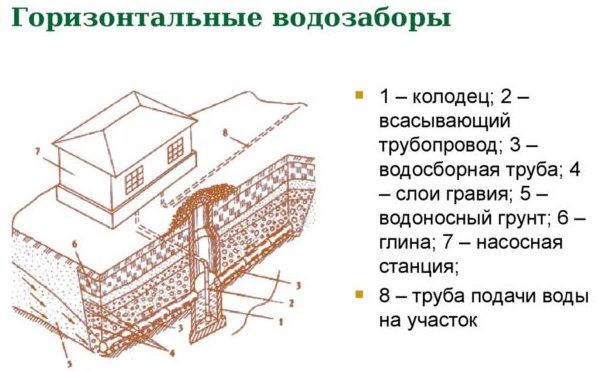
With the help of industrial water intake structures, industrial enterprises, large settlements and farms are provided with water. They have a significant passage size. Their productivity can reach 6000 m³/h. In some cases, the structure is located at a depth exceeding 200 meters. Water is supplied to consumers by means of powerful deep-well pumps and water towers.
The development of such structures is carried out by specialized organizations. Before starting work, the composition of the soil is studied, the depth of the aquifers is assessed, and the optimal place for the passage is selected. The drilling method is also determined.
Pros and cons
Rotary drilling of wells for water is a very common option in case of need to gain access to life-giving moisture. This method has a number of advantages over the others:
- high process speed;
- the ability to work with different types of soil due to the use of a chisel with certain edges, made of a material suitable for hardness;
- the small size of the installation and in some cases its mobility.
The method also has disadvantages, rather certain limitations.
In some cases, you need to be careful and remember that:
- solid objects in the way of the well - an obstacle in the absence of special equipment that will help destroy the rock;
- in winter, the operation of the rotary unit is impossible, since the soil freezes deep enough, and the flushing liquid may freeze;
- the power of the installation depends on the rotor, which is very vulnerable.
Related video: How to choose a place for drilling a well
A selection of questions
- Mikhail, Lipetsk — What discs for metal cutting should be used?
- Ivan, Moscow — What is the GOST of metal-rolled sheet steel?
- Maksim, Tver — What are the best racks for storing rolled metal products?
- Vladimir, Novosibirsk — What does ultrasonic processing of metals mean without the use of abrasive substances?
- Valery, Moscow — How to forge a knife from a bearing with your own hands?
- Stanislav, Voronezh — What equipment is used for the production of galvanized steel air ducts?
Deviated well profiles
Deviated well drilling has several profiles.
To organize technically correct drilling, it is necessary to outline in advance the areas of the future slaughter, its depth and position.
Drilling profiles can be as follows:
- The sloping section is the segment of the first passage of the drill, which deviates by one or two degrees.
- Set angle section - next to the inclined section, on which the drilling angle is curved and becomes steeper.
- Straight section - after setting the angle, a small segment is made with a straight line, as if continuing the direction of the steep angle.
- The segment of the decrease in the angle of inclination - the drill is directed in the direction of decreasing the angle, up to the deepest point of the bottomhole.
Regardless of the profile design, the top of the face must always be vertical. In geological surveys, inclined wells are drilled with spindles from the ground surface. First, the bottom hole has a straight direction, which is set by the spindle, then, as a result of the anisotropy of the drilled soil, the line will deviate from the initially specified movement.
With a deviation of more than fifty degrees, the volume of drilling increases as a result of the limitation of traditional methods of geological exploration through a cable dipped into the well.
The principle of operation of the installations
Rotary drilling is an ideal method for shaping a well or extracting water if the result is the possibility of consuming large amounts of clean drinking water. Such a well should work for a long time and uninterruptedly.
To achieve good results will allow such a hydraulic structure as a rotary installation.
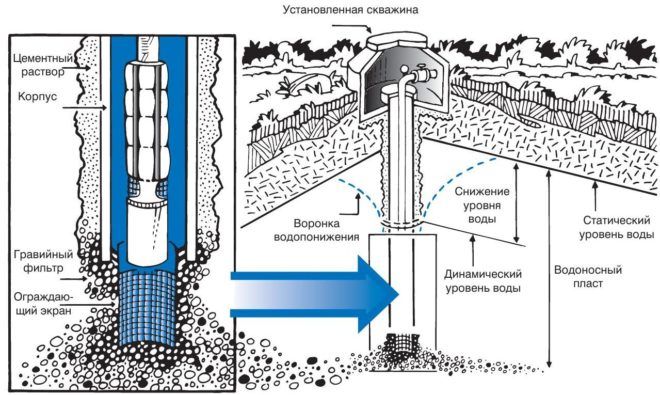
It is able to drill a very deep well, the water from which is enough not only for drinking purposes, watering the site, pool, but also for other domestic needs.
In rotary drilling, the technology is quite simple. A shaft with a tip, which is a chisel, is lowered into the drill pipe. The process of rotation begins, and with the help of a chisel, the rock is destroyed. The rotation process itself is carried out using a hydraulic installation. In order for the destroyed rock to leave the well, a flushing solution is used. There are two ways to submit it:
- Direct flush. It is pumped into the drill pipe using a pump, and squeezed out through the annulus.
- Backwash. Everything happens opposite to direct flushing: first, flushing fluid is fed into the annulus, and then, using pumps, it is pumped out of the drill pipe together with the rock.
Direct flushing relative to reverse flushing is inexpensive, which allows owners of country houses to use this method. When drilling on an industrial scale, for example, in the development of oil wells, the backwash method is more rational, although more expensive.
The cleaning system itself also consists of several elements:
- gutter;
- vibrating sieve;
- hydrocyclones.
Rotary controlled system
3.1 Hammer drilling
Impact drilling.
Of all its varieties, the largest
distribution received shock-rope
drilling (Figure 2.7).
drilling projectile,
which consists of a chisel 1, shock
rod 2, sliding rod-scissors 3 and
rope lock 4, lowered into the well
on rope 5, which, bending around block 6,
draw roller 8 and guide roller
10 is unwound from the drilling drum 11
machine. Drilling speed
adjust brake 12. Block 6 installed
on the top of the mast 18. To dampen vibrations,
arising during drilling are applied
dampers 7.
Crank 14 at
the help of the connecting rod 15 leads to oscillatory
movement of balance frame 9. When lowering
frame tension roller 8 tensions the rope
and raises the drilling projectile above the bottomhole.
When the frame is raised, the rope is lowered,
the projectile falls, and when the chisel hits
the rock is destroyed.
Figure 2.7 - Scheme
percussion drilling
As you accumulate
at the bottom of the destroyed rock (sludge)
there is a need for cleaning
wells. To do this, using the drum
pulling the drill out of the well
and repeatedly lower the bailer into it
13 on the rope 17, unwinding from the drum
16. There is a valve in the bottom of the bailer. At
immersion of the bailer in the sludge
liquid valve opens and bailer
filled with this mixture, when lifting
bailer valve closes. raised
on the surface of the contaminated liquid
pour into collection container. For complete
well cleaning has to be lowered
bailer several times in a row.
After cleaning
drilling rig is lowered into the well
projectile, and the drilling process continues.
When percussive drilling
the well is usually not filled
liquid. Therefore, in order to avoid collapse
rocks from its walls, lower the casing
column made of metal
casing pipes connected to each other
by threading or welding. As
deepening well casing string
advance to the slaughter and periodically
lengthen (increase) by one pipe.
impact method
for more than 50 years has not been used in oil and gas
industries of Russia. However, in exploration
drilling in alluvial deposits,
in engineering and geological surveys,
drilling wells for water, etc. finds
its application.
Drilling process
The fluid supplied when using the method of rotary well drilling under high pressure erodes the soil under the bit and brings it to the surface. There, the liquid enters the treatment plant.Various filters, including a vibrating screen, release the liquid from the rock, and water is again poured into the system.
For different rocks, different types of flushing fluids can be used: clean water for rocky rock or a water-clay solution for loose soil. In some cases, it is possible to blow the well with compressed air.
The rig itself for the rotary method of drilling wells is a tower to which lifting equipment and other technical devices are attached. In the derrick shaft, which goes into the well, there is a drill string driven by different types of engines: electric, internal combustion, vehicle engine, which became the basis for a rotary installation.
